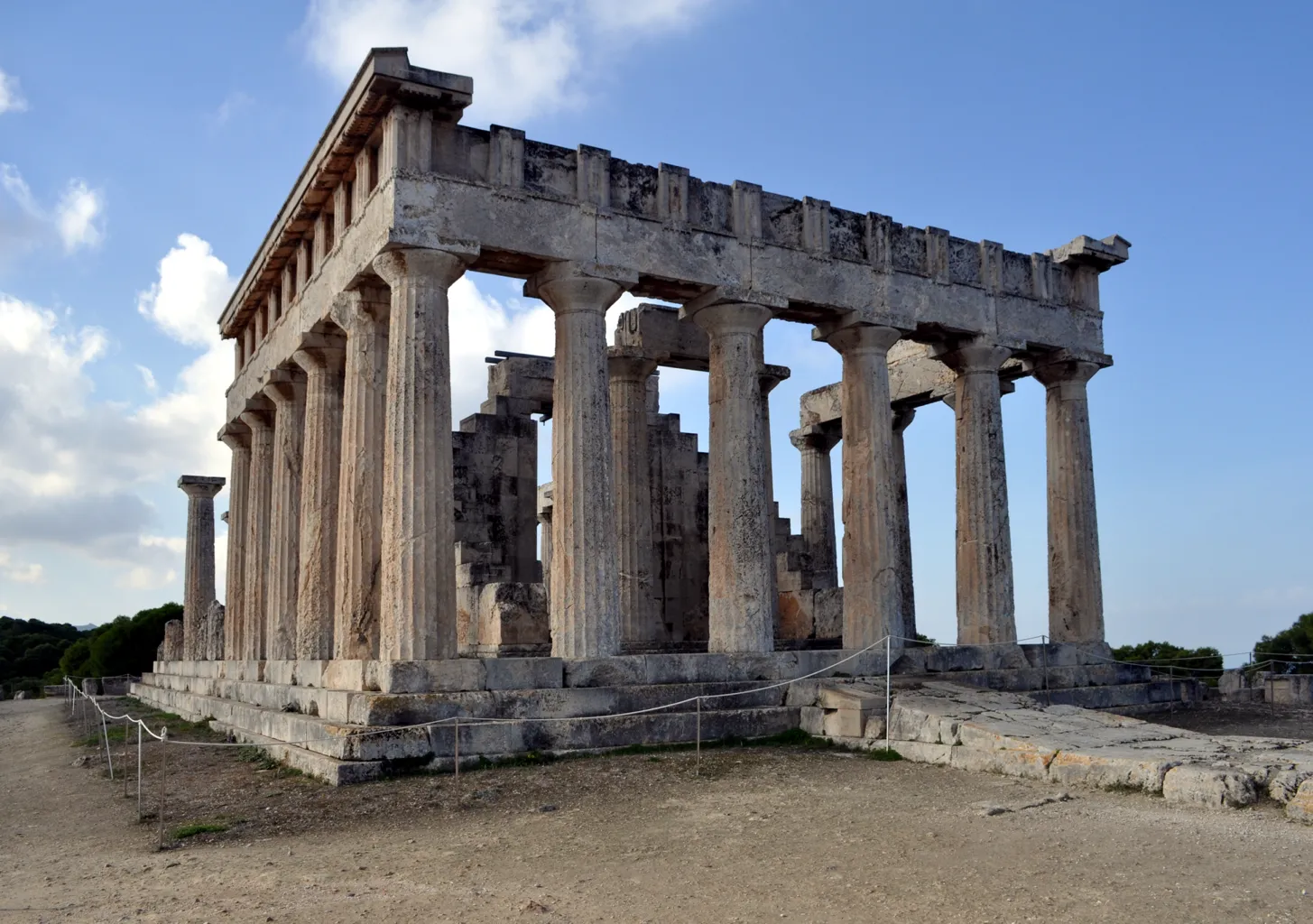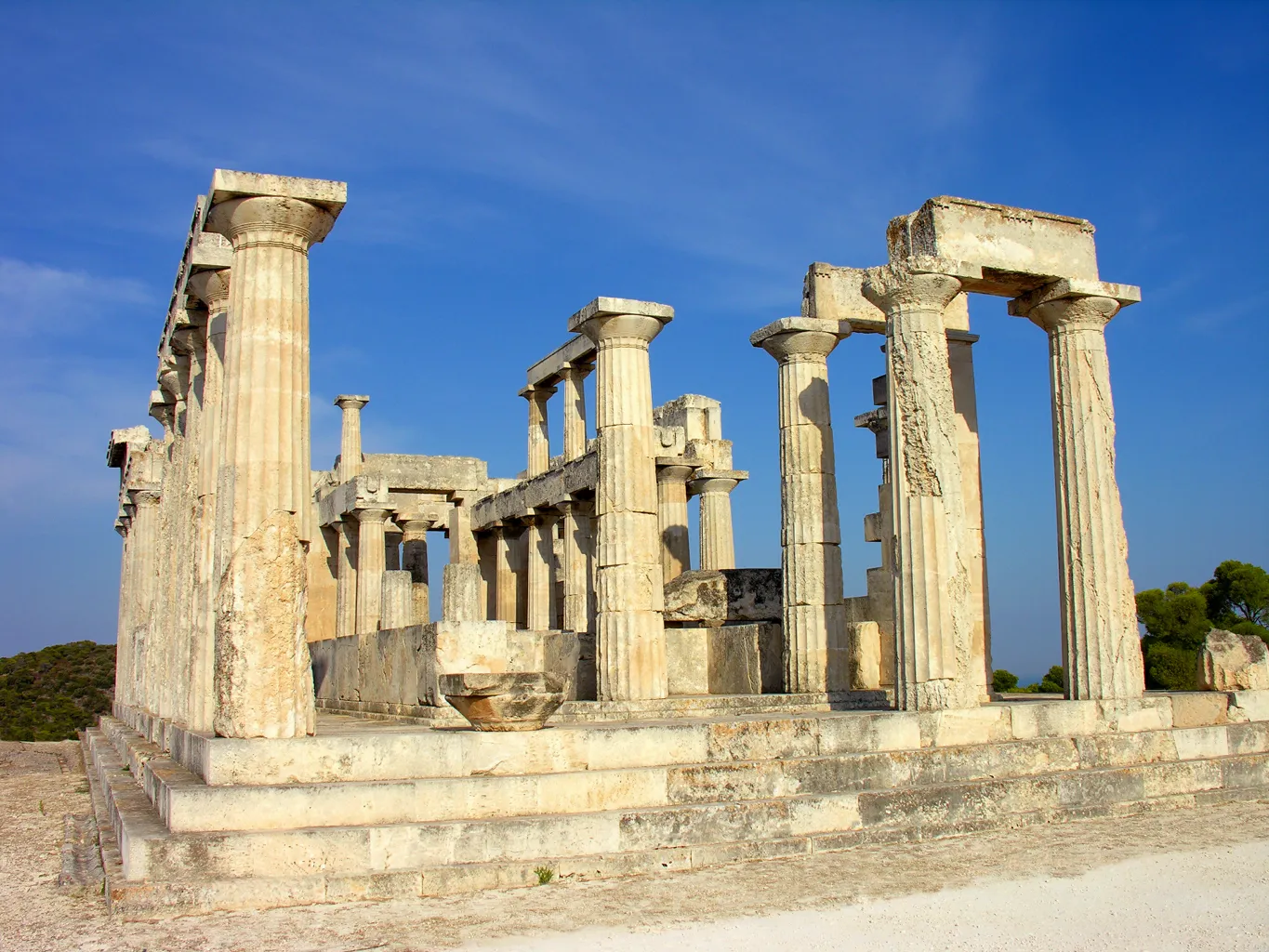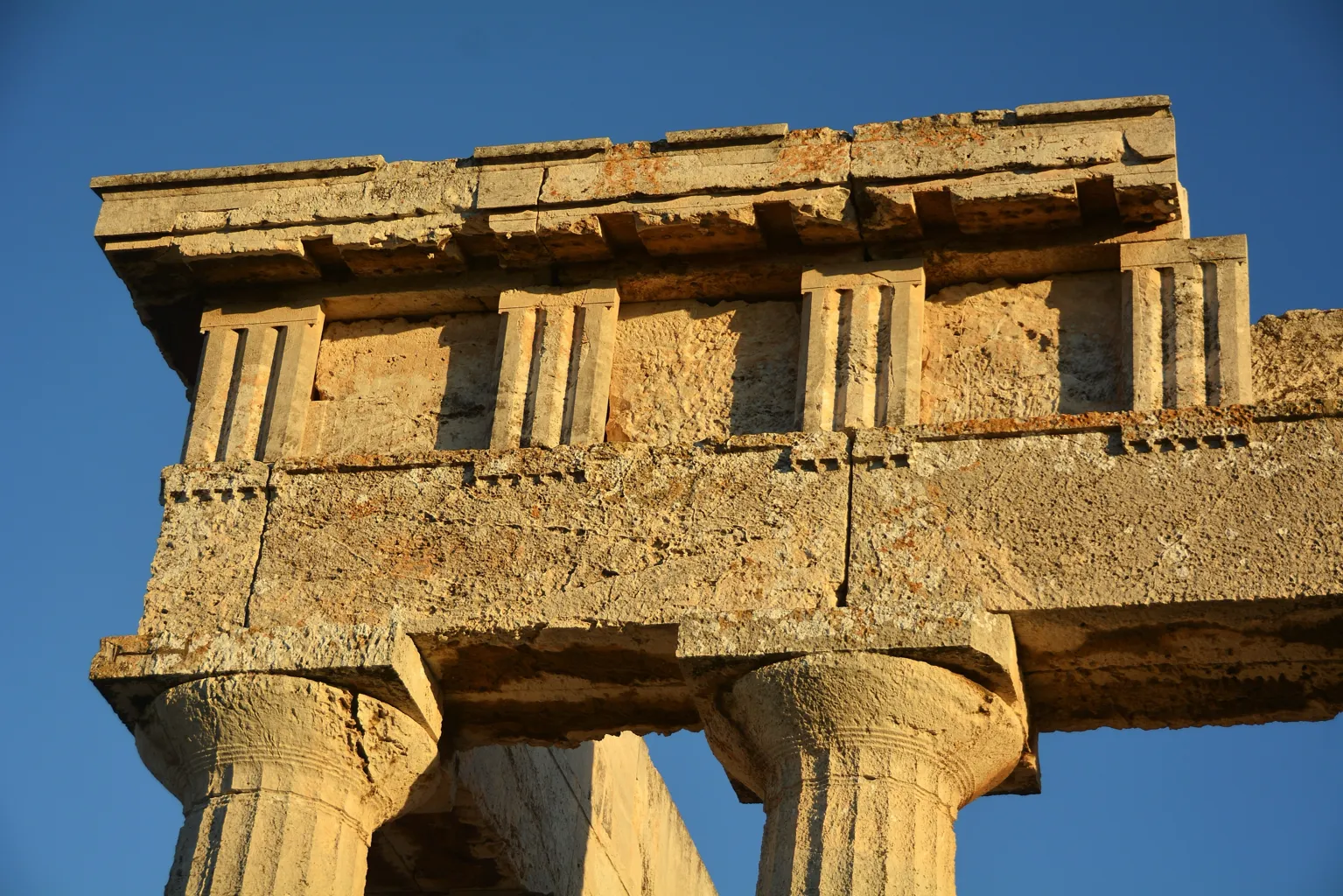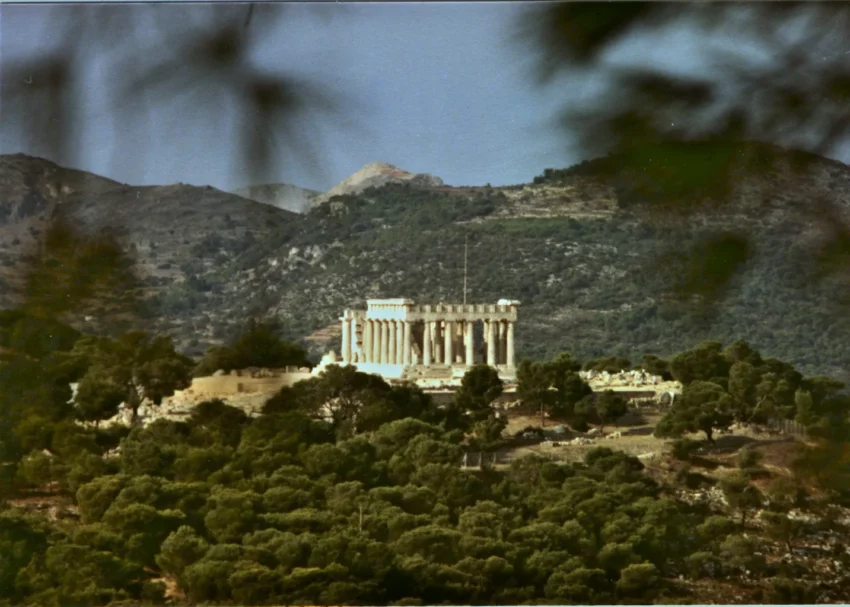The Temple of Aphaia: An Archaeological and Historical Overview
The Temple of Aphaia, located on the island of Aegina in the Saronic Gulf, is a significant example of ancient Greek architecture. Dedicated to the goddess Aphaia, this Doric temple stands on a 160-meter peak on the island’s eastern side, approximately 13 kilometers from the main port. The temple’s history, architectural evolution, and archaeological significance provide valuable insights into ancient Greek religious practices and artistic development.
Get your dose of History via Email
Historical Background
Aphaia, a goddess worshipped exclusively at this sanctuary, had a temple built around 500 BC over the remains of an earlier structure from 570 BC. The earlier temple was destroyed by fire around 510 BC. Elements of this older temple were buried in the infill for the larger terrace of the later temple, preserving many fragments with traces of paint. Evidence suggests that cult activity at the site may have been continuous from the 14th century BC, indicating a possible Minoan connection.

Architectural Phases
Bronze Age Phase
During the Bronze Age, the hilltop served as an open-air sanctuary dedicated to a female fertility and agricultural deity. The site contained numerous figurines and pottery, with a significant number of female figurines, suggesting continuous cult activity.
Late Geometric Phase
Around 700 BC, an altar was established at the eastern end of the sanctuary. A cistern and a treasury were also constructed. The temple from this period is believed to be under the later temples, making excavation difficult. The structure likely had stone socles with mudbrick upper walls and a wooden entablature.

Archaic Phase (Aphaia Temple I)
The first Archaic temple, dating before 570 BC, featured a stone socle and mudbrick upper level. It had a peribolos wall enclosing an area of 40 by 45 meters, a raised platform connecting the temple to the altar, and a propylon with a wooden superstructure. The temple’s cella had two rows of columns supporting another level of columns reaching the roof. This temple was destroyed by fire around 510 BC.
Late Archaic Phase (Aphaia Temple II)
Construction of a new temple began soon after the destruction of the older one. The new temple, a hexastyle peripteral Doric structure, rested on a 15.5 by 30.5-meter platform. It featured a distyle in antis cella with an opisthodomos and a pronaos. The cella had two rows of five columns supporting another level of columns. The roof corners were decorated with sphinx acroteria, and the central acroterion had kore statues. Dates for this temple range from 510 to 470 BC.

Pedimental Sculptures
The temple’s pedimental sculptures, now housed in the Glyptothek of Munich, depict scenes from the two Trojan wars. The east pediment features the first Trojan war led by Heracles against Laomedon, while the west pediment depicts the second Trojan war described by Homer. The sculptures are significant for their transition from Archaic to Early Classical techniques and retain extensive traces of paint.
Archaeological Exploration
The site was briefly mentioned by Pausanias in the 2nd century AD. It gained attention in Western Europe through the publication of the “Antiquities of Ionia” in 1797. In 1811, Charles Robert Cockerell and Baron Otto Magnus von Stackelberg removed the pediment sculptures, which were later sold to Crown Prince Ludwig of Bavaria. Systematic excavations began in the 20th century by the German School in Athens, leading to significant discoveries and reconstructions.

Conclusion
The Temple of Aphaia on Aegina is a remarkable example of ancient Greek religious architecture. Its various phases of construction, from the Bronze Age to the Late Archaic period, reflect the evolution of Greek architectural and artistic practices. The temple’s well-preserved remains and pedimental sculptures provide valuable insights into the religious and cultural history of ancient Greece.
Sources:

